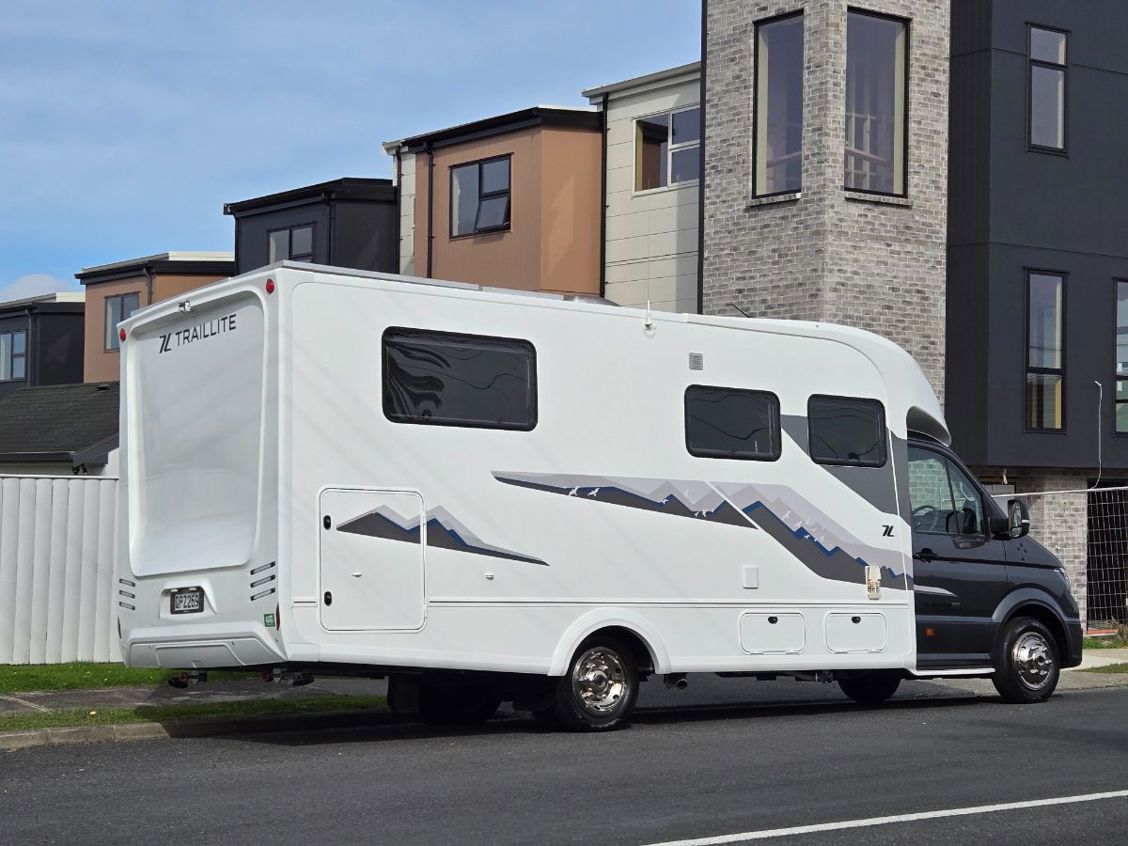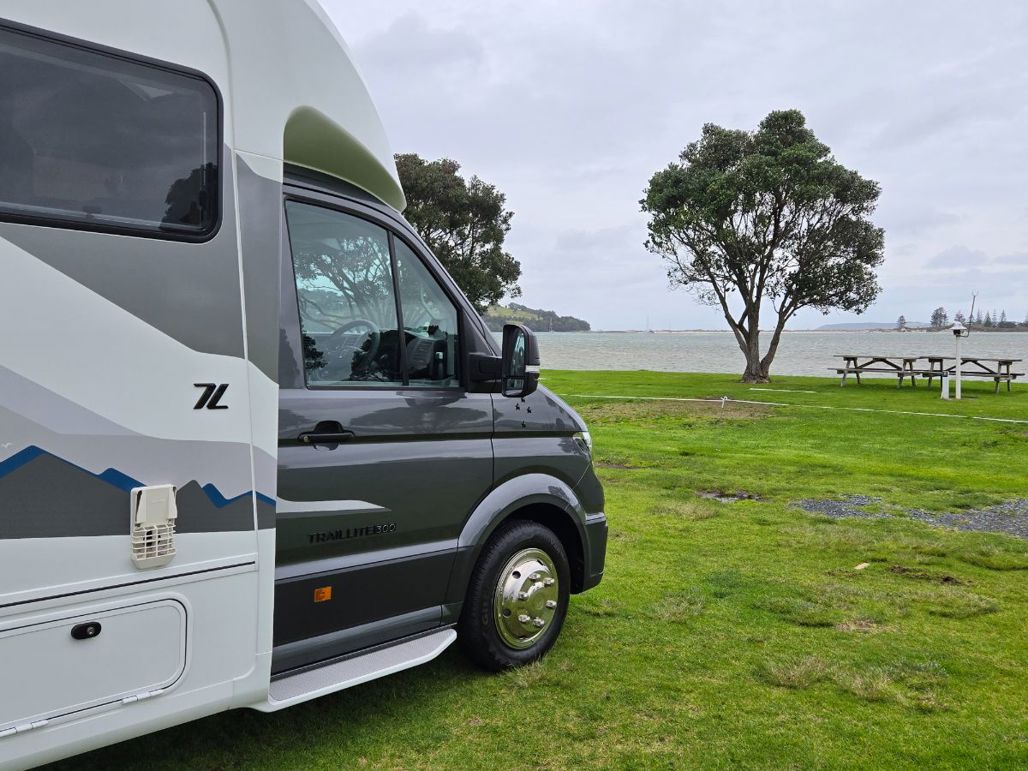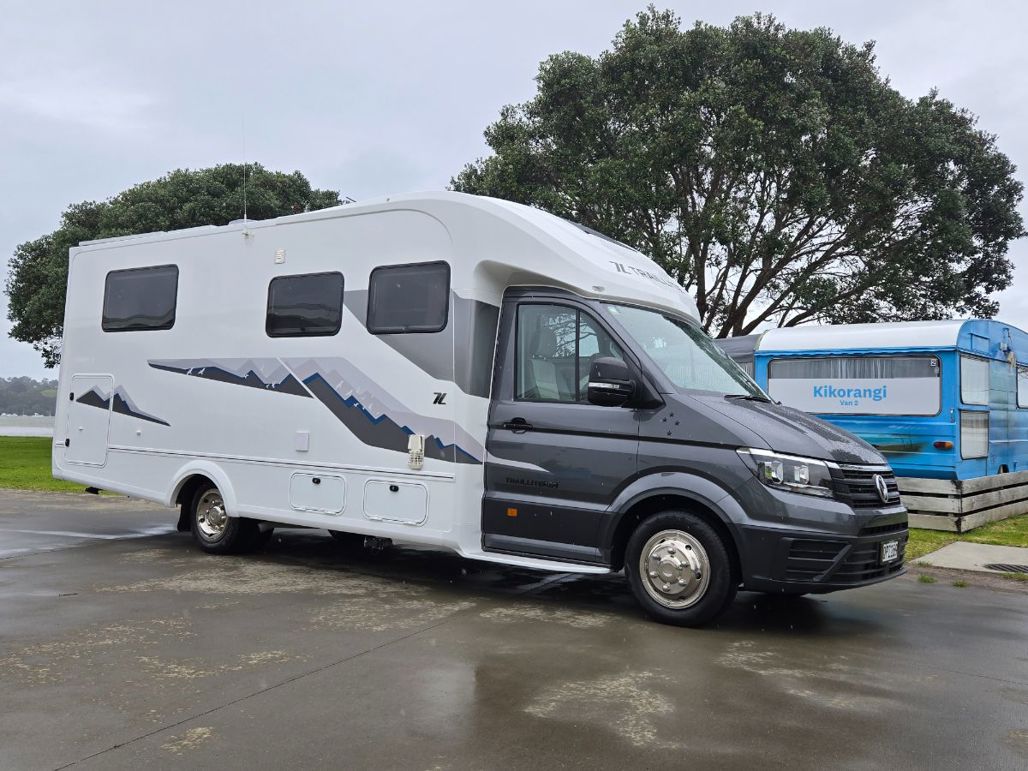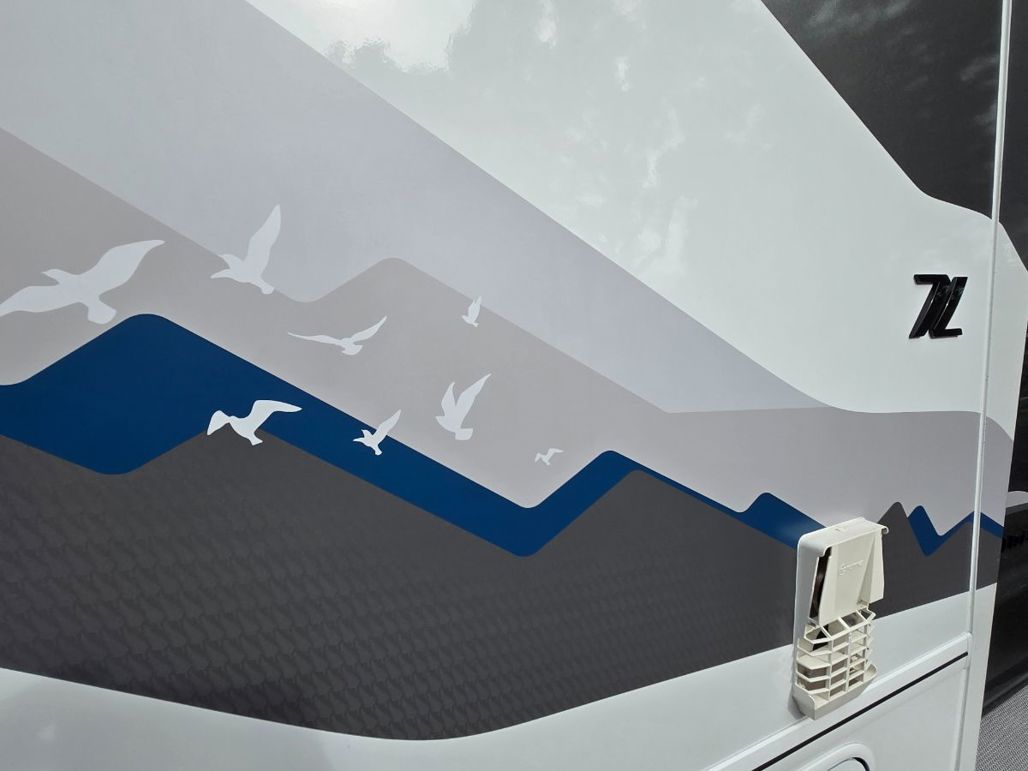We are car people. You’re reading this, so you are probably car people too. What would it take to become… motorhome people?

TRAILLITE 300 OAKURA 354: Engine: 2.0-litre turbo-diesel 4-cylinder Power: 130kW/410Nm Gearbox: 8-speed automatic, RWD Consumption: 14.8l/100km (as tested) Price: $296,850.
When it comes right down to it, the appeal of a motorhome to a car person probably depends a lot on the base vehicle. If it’s something recognisably cool, that’s a good start; if it’s crossed over into something a bit trucky, it’s probably going to lose us.
This seems like a good time to introduce the TrailLite 300, the smallest motorhome series produced by the Pukekohe-based company.
You’re seeing that right: this one's based on a Volkswagen Crafter, which is a good start because that brings a certain degree of desirability. Because, you know, VW and motorhomes; plus it’s the same base vehicle that underpins the VW Grand California, with which we have previous form and some good times.

The Crafter connection makes the 300-series kinda cool, even though there’s an enormous white box on the back.
Another thing that makes the TrailLite 300 cool: it’s a Kiwi product... at least behind the German bit.
Ah yes, the box. This is a whole other level up from something like the Grand, which is still built around a commercial van. For the 300, TrailLite takes a factory Crafter cab-chassis (dual rear wheels, even) and adds the rest; all locally designed and manufactured, built up in its workshop in Pukekohe.

TrailLite vehicles are hand-made at the rate of around two per week. So that’s another thing that makes the 300 cool: it’s a Kiwi product, at least behind the German bit.
Prices for the 300 start at $296,850; yes, that’s over $100k more than a VW Grand California, but this is a whole lot more house-on-wheels.
If you think a Grand is big, this is something else. In the motorhome world this is for “first-time owners or upgraders” (TrailLite’s words), but for us it’s quite daunting: 8.1m long and a GVM of 5.5 tonnes.

But another reason it fits into our world quite nicely is that it’s something to own and enjoy, not rent. TrailLite builds for private customers, so it’s a motorhome you take... home to keep. Prices for the 300 start at $296,850; yes, that’s over $100k more than the Grand, but it’s a whole lot more house-on-wheels.
There were a couple of times I kind of forgot this was a chunky motorhome and started driving like Van Man.
After a highly compressed but pretty-much-essential handover (it’s normally 4-5 hours for new owners, but we borrowers got the basics in a 90min), our plan was to head north towards Matakana and Leigh, with the aim of covering around 400km over the weekend and more importantly, spending as many hours as possible living in a box.

Driving first (because we’re car people). The Crafter cab-chassis base used for the 300 has the same 2.0-litre, 130kW/410Nm turbo-diesel engine as the Grand; which seems absurdly underpowered for something this size on paper, but actually it cruised along nicely at motorway speeds and had no trouble on the uphill winding stuff as we passed though Matakana towards the coast.
In fact, there were a couple of times I kind of forgot this was a chunky motorhome and started driving like Van Man. It helps that the Crafter has driver assists like automatic lane keeping and adaptive cruise; the only real struggle if you’re used to something much smaller is the complete lack of rearward visibility. There are dual cameras fitted to the back and a display screen atop the dashboard, but it’s pretty low-res (it doesn’t like bright sunlight either) and both views required quite a bit of mental recalibration.

There’s one camera pointing straight back, but what looks like a vehicle glued to your rear bumper is actually many, many car-lengths back; there’s another camera that points straight down from the roof to assist with close-quarters reversing, but it really does point straight down. So you can’t see anything until you’re extremely close.
But it all does the job and seasoned motorhome drivers no doubt take it all in their stride. You’re still painfully aware of the fuzzy display when you're driving somebody else’s $300k vehicle.

We settled on Whangateau Holiday Park as our base, in between Matakana and Leigh and right on the water. Not that you could see much of the water, with some wild weather closing in.
TrailLite says its products are designed “apartment style”, which means neutral colours, modern fabrics and more than a few surpise-and-delight details. Case in point: the kitchen drawers are secured with magnetic latches to keep them closed when driving, and can all be released with one touch on the main control panel (which also operates the lights and gives readings for the house battery, water tanks and so on).

A Grand California is an awesome thing to go camping in, and it is also self-contained. But this TrailLite feels more like living. You can walk around, the shower and bathroom/toilet are separate and both are decent sizes; although you do have to be very good friends with your motorhome-mate around the former, because the shower is right at the foot of the bed. You can, however, partition the bedroom with the reversible bathroom door.
To go on: there’s a surprising amount of bench space, a gas cooktop and even a proper oven, plus microwave. A 190l fridge/freezer. And a wine cupboard. You can sit in the lounge and watch television, which is connected to a satellite dish, with Sky card input and (if you choose to add a modem) internet connectivity for streaming services.

It’s all pretty much idiot-proof, which I am confident in saying because we got through the weekend without any major problems, despite insisting on the very short version of the handover.
The on-board systems generally take care of everything. Using the fridge as an example: when the vehicle is driving, the engine is used to keep it running; if you stop, the “house battery” takes over; if you plug in at a campsite, that takes over; if you want to keep everything going while you’re parked for an extended period away from plug-in power, you can simply turn on the gas. The electrical equipment and detects what’s available and switches to that automatically.

TrailLite offers three different layouts for the 300. Ours is the Oakura, with the queen bed at the back and four-seat lounge/table up front (the Crafter front seats also swivel, to make six). The Karapiro is similar, but with two single beds at the back, while the Matakana has a larger lounge area located at the back and a drop-down bed, meaning a bit more usable space up front.
The 300l fresh water and 250l grey water are claimed to be enough for up to six days self-contained and there are dual gas bottles and 540W solar power to keep you going when you’re not driving or plugged in.

One thing that distinguishes a motorhome from a mere camper is surely decent storage: not just inside, but also externally. Like most motorhomes of its ilk, the 300 has a massive area behind the rear wheelarch, below the cabin, that’s accessible from either side via huge doors. It’s called the “garage”, with good reason.
Note also the awning on the left-hand side, which potentially extends the living area even further. But not on our weekend, because it would have blown away.

But we didn’t mind the weather at all. And in fact, even though our campground had great facilities, we didn’t use them at all because we found it preferable to essentially freedom-camp and simply stay indoors. So there’s a genuine endorsement for you.
Full disclosure: our definition of freedom camping includes going out somewhere nice for dinner, but that in itself is a good test, because we managed to drive into Matakana on a Friday night and find a parking space in the main street; ditto for the Matakana Village Farmers' Market the next morning.

So yes, the 300 is big and and you can't pop into the supermarket carpark with it; but it's not impractically large. I also really looked forward to the drive home. The 300 pleases everybody.




























